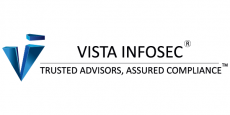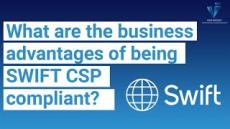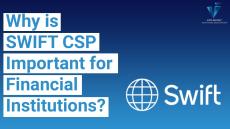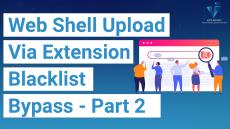|
By Ronak Patel
The Society for Worldwide Interbank Financial Telecommunication (SWIFT) provides secure and reliable communication networks for over 11500 connected financial institutions to facilitate cross-border payments and securities transactions.
|
By Narendra Sahoo
Risk management is at the heart of any effective disaster recovery (DR) plan or playbook. No business is immune to disruptions, whether from natural disasters, cyberattacks, or technical failures. The question isn’t if, but when these threats will materialize. A proactive approach to risk management allows businesses to identify, assess, and mitigate these threats before they can bring operations to a standstill.
|
By Ronak Patel
PCI DSS is a set of requirements that is applied to every small and large organization that accepts, stores, processes, or transmits cardholder data. In particular, PCI DSS for SaaS companies is essential, as these platforms frequently handle sensitive customer information and must adhere to the latest security standards. In 2024, the updated version of PCI DSS 3.2.1, PCI DSS v4.0, became mandatory after being officially released on March 31, 2022, allowing organizations a transition period.
|
By Ronak Patel
DORA is an EU-based regulation that is going to be effective from January 17, 2025. It is a digital security framework that works alongside the General Data Protection Regulation (GDPR) to provide strong security protection to financial entities and ICT service providers from cybercrimes. Generally, every financial entity and ICT service provider inside or outside the EU that does business with the EU entities has to comply with DORA.
|
By Narendra Sahoo
Technology is always brimming with advancements, and it is more prominent in the financial sector. As financial institutions increasingly rely on digital infrastructure to enhance operations, customer experience, and security, they also face growing challenges in mitigating the risks that come with it, such as cyber threats, system failures, and other operational vulnerabilities.
|
By Narendra Sahoo
Data breaches, cyberattacks and misuse of personal information are severe threats challenging the privacy of customer’s data, they can not only damage a company’s reputation but can also lead to heavy fines if compromised. To overcome these challenges, data protection laws are established. Data protection laws safeguard personal information and establish important guidelines on collection, storage, processing, sharing and disposal of personal data.
|
By Ronak Patel
A Data Protection Officer (DPO) can be called as an ally for organizations that deals with large amount of Privacy related data in its core operation. They are appointed based on article 37 of GDPR, and help organizations stay compliant with data protection laws by overseeing data security policies, monitoring internal compliance, and providing expert advice for staffs managing the potential data privacy risks.
|
By Ronak Patel
As businesses continue to evolve in their customer service strategies, Contact Center as a Service (CCaaS) solutions have emerged as an effective tool for enhancing customer experience. These cloud-based platforms offer flexibility, scalability, and access to advanced technologies, making them a popular choice for organizations of all sizes. However, transitioning to CCaaS requires careful planning to ensure a smooth implementation process.
|
By Narendra Sahoo
The world can be just as much of a marvelous place, as it can be a dangerous one. And the same can be said about the online one, where you need to focus on your safety just as much but in a different way. For those wondering how to approach this, make sure to keep reading as we’ll be covering everything you need to know about cybersecurity.
|
By Narendra Sahoo
The risk of cyber attacks for companies is increasing and can significantly disrupt their operations, have negative financial consequences and damage their reputation. Small and medium enterprises (SMEs) are especially vulnerable to these attacks due to limited resources and a lack of cyber security expertise. Understanding the significance of cyber security is crucial for protecting sensitive data and ensuring business continuity.
|
By VISTA InfoSec
In today’s digital world, every swipe, click, and tap connects us—but it also comes with risks. Cybercriminals are constantly evolving, targeting payment systems and compromising financial security. A single breach can cost your business millions and erode customer trust forever. At VISTA InfoSec, we understand these challenges. That’s why we’re here to help you secure your payment systems with industry-leading solutions like PCI DSS compliance, SOC 2 audits, and advanced fraud detection tools.
|
By VISTA InfoSec
Cyberattacks targeting financial institutions cost the industry over $18 billion annually! Implementing SWIFT CSP compliance isn’t just about meeting regulatory requirements—it’s a game-changer for your business! In this video, you’ll discover: 1) How SWIFT CSP compliance enhances trust and credibility with clients 2) Improved Incident response & business impact 3) How SWIFT CSP ensures compliance and mitigates risks.
|
By VISTA InfoSec
Why is SWIFT CSP Critical for Financial Institutions? Did you know that 90% of global financial transactions rely on the SWIFT network? With such a massive role in the global economy, securing this system is non-negotiable for financial institutions. Enter the SWIFT Customer Security Program (CSP)—a framework designed to protect institutions from rising cyber threats and ensure safe, seamless transactions.
|
By VISTA InfoSec
Are you familiar with the SWIFT Customer Security Programme (CSP) and its significance in safeguarding global financial systems? In this video, we dive into the essentials of SWIFT CSP, an initiative launched in May 2017 to enhance the cybersecurity of financial institutions worldwide. Learn about: Whether you're a banking professional, a cybersecurity enthusiast, or simply curious about financial security frameworks, this video offers valuable insights into maintaining the integrity of financial transactions.
|
By VISTA InfoSec
The Digital Operational Resilience Act (DORA) is set to go live on January 17, 2025, marking a pivotal shift in cybersecurity compliance for financial entities across the EU. Did you know? Non-compliance with DORA can result in hefty fines or even operational bans for financial entities! In this video, we’ll break down everything you need to know about DORA (Digital Operational Resilience Act) compliance, giving you the tools to: Strengthen your operational resilience Manage ICT risks effectively Meet evolving regulatory requirements.
|
By VISTA InfoSec
We are thrilled to announce this significant milestone in our journey toward delivering the highest standards in cybersecurity services. reflects our unwavering commitment to excellence, professionalism, and continuous improvement in the field of cybersecurity and penetration testing.. About CREST: CREST is a globally recognized accreditation body for cybersecurity professionals, emphasizing competence, ethics, and professional development. Being CREST certified means meeting rigorous industry standards.
|
By VISTA InfoSec
Web shell attacks are a critical and growing threat, often evading traditional defenses. In this Part 2 of our exploration into web shell attacks, we uncover how attackers leverage extension blacklist bypasses to upload malicious web shells and compromise systems. Stay informed! Like, comment, and subscribe for more expert insights into cyber threats and effective defense strategies. For Collaboration and Business enquiries, please use the contact information below.
|
By VISTA InfoSec
We delve into an in-depth exploration of a common web security vulnerability related to file uploads and it demonstrates how attackers can exploit weaknesses in file extension blacklists to upload malicious web shells. We also cover the mechanics of bypassing these security measures, including specific techniques and tools used to see practical examples of how to conduct such an attack in a controlled environment, emphasizing the importance of understanding these vulnerabilities for defensive programming.
|
By VISTA InfoSec
Are you curious about the updates in PCI DSS Requirement 9 as we transition from Version 3.2.1 to 4.0? Requirement 9 focuses on physical security, a cornerstone of safeguarding cardholder data. With PCI DSS 4.0, new best practices, enhanced clarity, and updated guidelines have been introduced to address emerging threats and challenges. Whether you're an IT professional, QSA, or just starting your PCI DSS compliance journey, this video is packed with insights to help you stay ahead.
|
By VISTA InfoSec
***********************************************************************************
|
By VISTA InfoSec
General Data Protection Regulation (GDPR) is a global data privacy law established and enforced in the EU. It is a comprehensive law developed to protect and uphold the rights of EU Citizens. Organizations dealing with the personal data of citizens of the EU are required to comply with the requirements of GDPR. This brings in more transparency in the processing and securing of personal data while also ensuring citizens have control over their personal data.
|
By VISTA InfoSec
Information Security Management System is an international standard designed to manage the security of sensitive information. At the core, ISMS is about managing the people, processes, and technology through a risk management program. While there are many standards under the ISO27000 family, the ISO27001 Standard is the most popular and widely accepted standard in the industry.
|
By VISTA InfoSec
Virtualization is a technology that has greatly benefited businesses around the globe. The technology has a significant impact on the modern IT landscape and today plays a key role in the development and delivery of cloud computing solutions. However, the adoption of this advanced technology has major security implications on businesses today. The adoption of Virtualization has opened doors to a broad range of challenges for businesses in the industry. Especially, for organizations that are PCI regulated and required to comply with PCI DSS Standards, the challenges in this area only seem to grow.
- January 2025 (2)
- December 2024 (7)
- November 2024 (6)
- October 2024 (6)
- September 2024 (9)
- August 2024 (3)
- July 2024 (6)
- June 2024 (8)
- May 2024 (12)
- April 2024 (7)
- March 2024 (8)
- February 2024 (9)
- January 2024 (6)
- November 2023 (2)
- October 2023 (5)
- September 2023 (7)
- August 2023 (4)
- July 2023 (2)
- June 2023 (5)
- May 2023 (3)
- April 2023 (3)
- March 2023 (5)
- February 2023 (2)
- January 2023 (6)
- December 2022 (4)
- November 2022 (4)
- October 2022 (2)
- September 2022 (7)
- August 2022 (4)
- July 2022 (8)
- June 2022 (5)
- May 2022 (4)
- April 2022 (6)
- March 2022 (9)
- February 2022 (1)
- January 2022 (1)
- December 2021 (1)
- November 2021 (1)
VISTA InfoSec is a global Information Security Consulting firm, based in the US, UK, Singapore & India. Our Cyber Security Consulting solution is a blend of Compliance & Regulatory Consulting Services comprising of IT Audits, Risk & Security Management solutions, and Training Programs. We have been working with top multinational companies across the globe to address their Compliance, Regulatory, and Information Security challenges of their industry.
Why Us:
- Global Reach (USA, UK, Singapore, India, Middle East, Australia, South Africa)
- Vendor Neutral Company – No Hardware or Software sales
- An in-house team of Qualified Auditors & Industry expert Consultants
- No Outsourcing Policy
- Strict Timelines with a well-defined Project Plan and SLA
- Hosted DMS and Project Management Solutions at no extra cost
A Pure Play Vendor Agnostic Global Cyber Security Consultant.
















